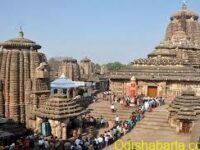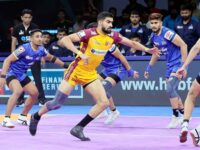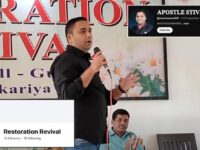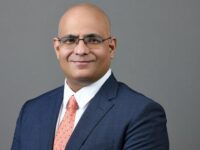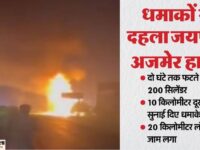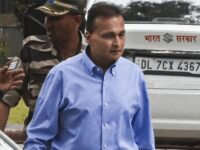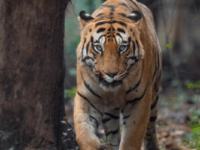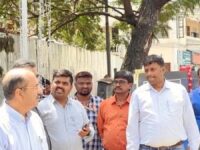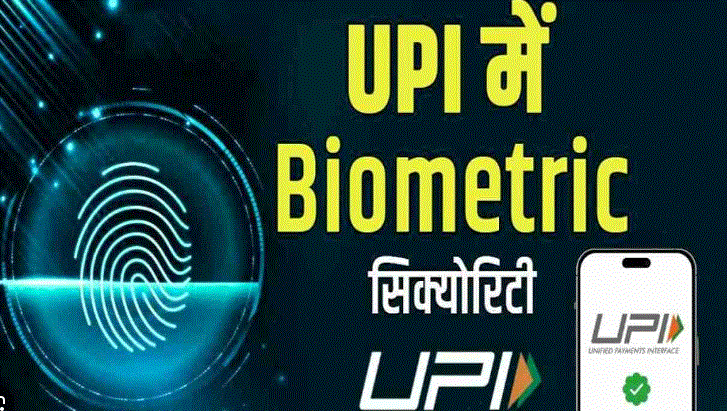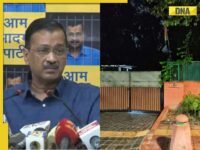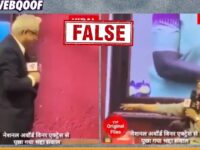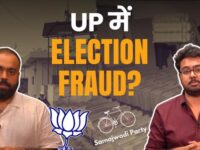When Ladakh was conferred Union Territory status in August 2019, Sonam Wangchuk expressed gratitude to Prime Minister Narendra Modi with folded hands. Now, the same person is urging individuals to resort to violence and pelt stones. Ladakh, a region renowned for its serene beauty is presently engulfed in turmoil, resulting in fatalities while the instigator retreated to his village as part of a meticulously orchestrated plot.
Footage and images have surfaced showing a Congress councilor actively inciting individuals while brandishing weapons. In Ladakh, where the announcement of Union Territory status was celebrated on 5th August 2019, instances of stone-pelting and arson occurred on 24th September. Violent demonstrations erupted in Ladakh as citizens demanded full statehood.
Four individuals lost their lives and many others sustained injuries during these protests. Protesters set fire to BJP offices and security vehicles and there were also accounts of stone-pelting in various locations.
Sonam Wangchuk celebrated the formation of Union Territory (UT)
Sonam Wangchuk plays a pivotal role in this violence which took place during his hunger strike. Alongside his supporters, he has been advocating for complete statehood for Ladakh. Currently, he is being accused of instigating this agitation despite having previously celebrated the establishment of the Union Territory (UT).
On 5th August 2019, the central government repealed Article 370 concerning Jammu and Kashmir, subsequently partitioning the region into two union territories. One was designated as Jammu and Kashmir while the other was named Ladakh. On that day, Sonam Wangchuk expressed his gratitude to the central government.
He thanked Prime Minister Narendra Modi for “fulfilling Ladakh’s longstanding dream.” He added, “It was exactly 30 years ago in August 1989 that Ladakhi leaders launched a movement for UT status. Thank you all who helped in this democratic decentralization.”
THANK YOU PRIME MINISTER
Ladakh thanks @narendramodi @PMOIndia
for fulfilling Ladakh’s longstanding dream.
It was exactly 30 years ago in August 1989 that Ladakhi leaders launched a movement for UT status. Thank you all who helped in this democratic decentralization! 🙏🙏🙏 pic.twitter.com/X7pmJ5zZin— Sonam Wangchuk (@Wangchuk66) August 5, 2019
Wangchuk was not the only individual rejoicing over Ladakh’s Union Territory status as organizations such as Anjuman Moin-ul-Islam also took part in the celebrations. On the fateful day the organization released a letter extending gratitude to PM Modi, Home Minister Amit Shah and the central government. Sonam Wangchuk personally shared this letter on his X account.
Today, Leh is under the shadow of violence and flames but on 5th August 2019 the same place witnessed celebrations accompanied with singing and dancing as Ladakh was conferred the status of a Union Territory.
#Ladakh to become Union territory without legislature; people celebrate in Leh Main Bazaar pic.twitter.com/dTWxYtHcDB
— DD News (@DDNewslive) August 6, 2019
Quest for a Union Territory status for Ladakh has been vey long
The residents of Ladakh who took to the streets in celebration during August 2019 did so for a significant reason. Indeed, the Modi administration had addressed their long-standing demand. In June 2019, prior to Ladakh being granted Union Territory status, the then BJP MP Jamyang Tsering Namgyal remarked, “The call for Ladakh to be separated from Jammu and Kashmir is not a recent phenomenon; the people of Ladakh have sought a distinct identity since 1948.”
Namgyal’s assertion holds validity. In 1949, Chewang Rigzin, the Chairman of the Subject Committee of the Ladakh Buddhist Association (LBA), presented a memorandum to the then Prime Minister Jawaharlal Nehru, advocating for “self-governance” for the people of Ladakh.
A significant movement advocating for Union Territory status for Ladakh emerged in 1964. This initiative was spearheaded by the Buddhist saint and then-Chief Lama of Ladakh, Kushok Bakula Rinpoche. Nevertheless, the request for UT status was not fulfilled during this demonstration.
In 1989, protests reignited, calling for UT status. The Ladakh Buddhist Association (LBA) presented a memorandum to the Government of India, reiterating their demand for autonomy for Ladakh. Additionally, the LBA organized a substantial rally to support this cause. In 1995, the Ladakh Autonomous Hill Development Council (LAHDC) was formed to respond to this demand.
Subsequently, protests advocating the demand persisted for numerous years. The central government was of the opinion that addressing the demands would necessitate an amendment to Article 370, a step that the Congress government was reluctant to undertake. In 2016, the All Religious Joint Action Committee (ARJAC), which had been advocating for a UT, adopted a resolution calling for the same for Ladakh. This aspiration of the Ladakhis was ultimately fulfilled by the Modi government in 2019.
How the appeal progressed to full state
Ladakh was conferred with Union Territory status, prompting the central government to initiate development efforts in the region. Under the leadership of PM Modi, Ladakh received permission to establish a university, a hotel management institute and a professional college. A substantial financial package amounting to crores was allocated. Infrastructure such as roads and bridges was developed. However, this progress and peace were met with resistance from certain “activists.”
A growing sentiment emerged among the populace that corporations would come and seize all available land. Speculations arose that outsiders would migrate and settle in the area. In early 2023, Sonam Wangchuk initiated a protest by sleeping outdoors, advocating for “constitutional safeguards for Ladakh.” Over time, the protest gained momentum.
The Leh Apex Body (LAB) and the Kargil Democratic Alliance (KAD) expressed their support as well. In March 2024, Soman Wangchuk and individuals linked to the LAB-KDA initiated another strike in Leh. In September 2024, LAB also commenced the “Dilli Chalo Padyatra.”
Sixth Schedule – Negotiations about full statehood?
Leaders from Ladakh have presented four demands to the Home Ministry, which include granting full statehood to Ladakh, incorporating it into the Sixth Schedule of the Constitution, creating a distinct Public Service Commission and allocating two parliamentary seats. The Home Ministry tentatively approved the latter two requests.
Additionally, protesters in Ladakh are advocating for inclusion in the Sixth Schedule of the Constitution. In simple terms, the Sixth Schedule of the Constitution offers special autonomy to tribal regions with the objective of safeguarding the culture, land and resources of tribal populations.
The BJP has incorporated this demand into its manifesto, indicating that the party is contemplating how to pursue it. Currently discussions are taking place with the central government concerning the demands of the protesters. Prior to the Wangchuk protest in March 2024, a delegation from Ladakh engaged in discussions with Union Home Minister Amit Shah.
In relation to this dialogue, the Home Ministry remarked, “Amit Shah assured the delegation that the government, led by PM Modi, is dedicated to offering the essential constitutional protections to the Union Territory of Ladakh.”
This was not an isolated meeting. In a press release dated 24th September, the Home Ministry announced, “The Government of India is actively collaborating with the Apex Body Leh and Kargil Democratic Alliance regarding these matters. Several meetings have been conducted with them through the official channels of the High Powered Committee and its sub-committees, as well as through various informal discussions with leaders.”
The central government indicated that discussions with Ladakhi leaders are scheduled for 25th and 26th September. Additionally, the High Powered Committee is set to convene on 6th October. However, prior to that, there has been an effort to provoke unrest in Ladakh.
Did Wangchuk plan to incite violence?
The incidents of arson and stone-pelting in Leh took place on 24th September. However, the groundwork for these events had already been laid. Sonam Wangchuk had warned of a potentially explosive situation during a press conference in September 2024. He stated, “The government has restricted their freedoms by denying them democracy, and simultaneously, by withholding employment, it has incapacitated them. The circumstances in Ladakh, which borders Pakistan and China, could escalate into a crisis.”
Sonam Wangchuk, who has been scrutinized regarding his foreign funding, made a reference to GenZ in relation to these protests. This term has recently become prominent due to the GenZ protests in Nepal, which were marked by incidents of arson, looting and stone-pelting. Numerous individuals lost their lives, even ministers were assaulted and the government was ultimately overthrown.
This prompts the inquiry: Is Wangchuk attempting to rationalize the violence and the government’s overthrow by associating his protests with those in Nepal? Not only Sonam, but a Congress councilor has also been implicated in inciting the violence. The BJP has disseminated images and videos of councilor Stanzing Tsepang inciting such violence.
Where was Wangchuk during the time when efforts were required to prevent the violence? Additionally, the Home Ministry pointed out, “Despite several leaders urging him to terminate the hunger strike, he (Wangchuk) continued his hunger strike and misled the public by making incendiary references to protests reminiscent of the Arab Spring and Gen Z protests in Nepal.”
It is evident that this type of violence, along with the demands being discussed by the government, which included both past and future meetings, could only have been planned. In a democratic framework, dialogue is the sole path forward, and it should have been the exclusive resolution.
Nevertheless, the efforts to provoke chaos unmistakably suggest that certain individuals are uncomfortable with the peace in India. They aim to foster an atmosphere of disorder within the nation, occasionally utilizing Gen Z, and at other times drawing parallels with situations in Bangladesh and Sri Lanka.
Read the report in Hindi here.

